Piazza Bra is, in many ways, the heart of Verona Italy. Geographically, it's in the old city center, the Citta Antica, nestled against the remains of the ancient city walls. It's a center for civic activity, including the city's town hall, it adjoins the main fashionable shopping areas, and it includes the first-century Roman arena which is the modern city's main music venue.
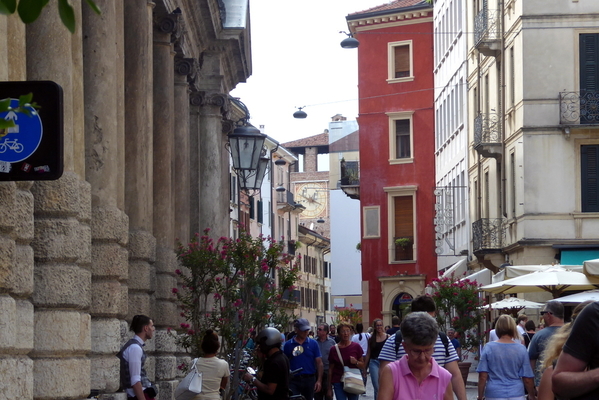 It's also one of the most pleasant places we've ever found to sit around, to enjoy a meal, to window shop, to people watch, to engage in dolce far niente, or 'pleasant idleness.' It's the largest open space in Verona, and is said to be the largest open square in Italy. By some. And not by others. Civic pride in other cities, including Bologna, is at stake.
It's also one of the most pleasant places we've ever found to sit around, to enjoy a meal, to window shop, to people watch, to engage in dolce far niente, or 'pleasant idleness.' It's the largest open space in Verona, and is said to be the largest open square in Italy. By some. And not by others. Civic pride in other cities, including Bologna, is at stake.
But regardless of size, we enjoyed it enough on our first visit to Verona that we made it the center of our apartment search the next time.
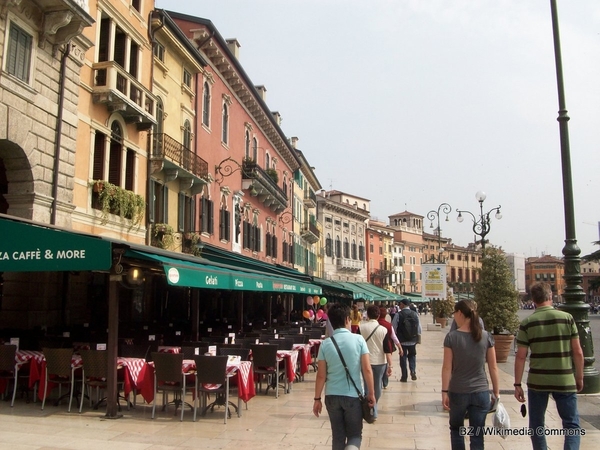
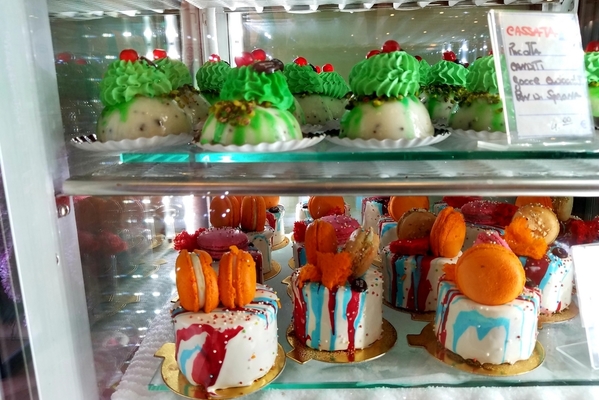
One long edge of the square is lined with restaurants and cafes of varying prices (and of course qualities; the Arena dominates the northern end, and major buildings front the south and eastern side, with a pleasantly-landscaped park at the center.
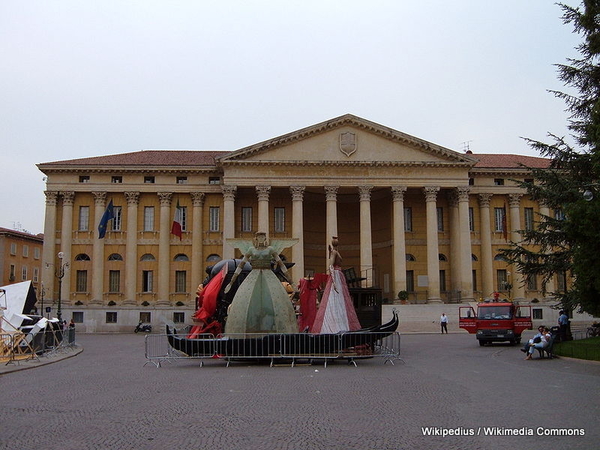 The key buildings, the Gran Guardia and the Palazzo Barbieri, have a somewhat linked history. The Gran Guardia was originally built not as a building, but just as a roof held up by columns to provide shelter for troops in the 17th century, when Verona was ruled by Venice. It wasn't finished, as a building, until 1808, by architect Giuseppi Barbieri. Today, it's a meeting and conference venue.
The key buildings, the Gran Guardia and the Palazzo Barbieri, have a somewhat linked history. The Gran Guardia was originally built not as a building, but just as a roof held up by columns to provide shelter for troops in the 17th century, when Verona was ruled by Venice. It wasn't finished, as a building, until 1808, by architect Giuseppi Barbieri. Today, it's a meeting and conference venue.
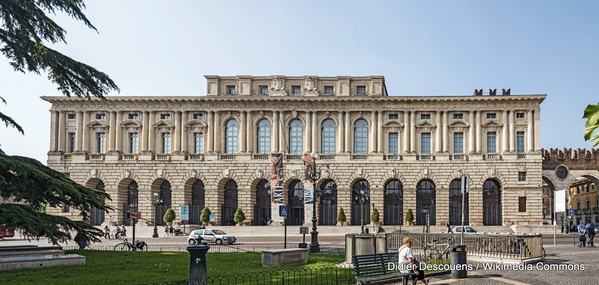
Barbieri's next major job was to build a new palace next to it to house city government. Originally named Palazzo della Gran Guardia Nuova, or New Gran Guardia Palace, it was built between 1836 and 1848 and is still the seat of Verona's municipal government. It was later renamed for the architect.
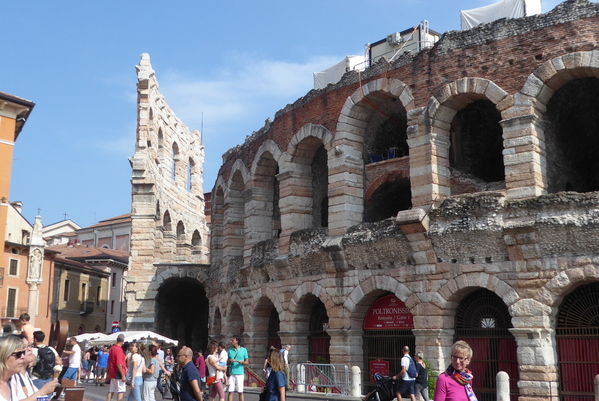
The Piazza's dominant building, of course, is the Arena, which ranks as one of the world's great opera venues, with a major season each year (weather permitting!) and houses many other performances as well. It also dominates a lot of space around its walls, because its huge sets and decorations have to be stored outside the arena and moved in by crane for new shows. It'salways fun to walk around the outside and guess which opera each prop is for.
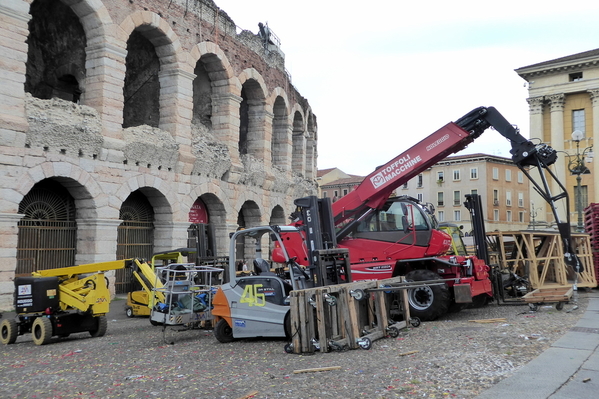
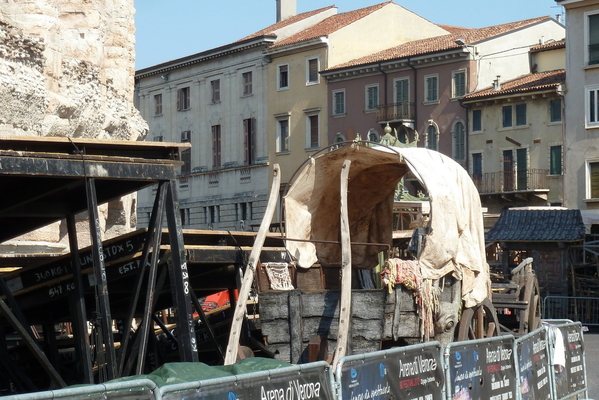
Some are more obvious than others...these are for Aida. The scene below is not part of the opera presentations; it appeared to part of an advertising promotion, but in Piazza Bra, there's always something happening.
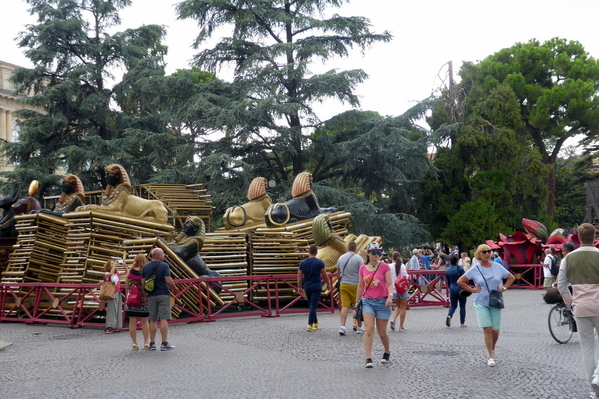
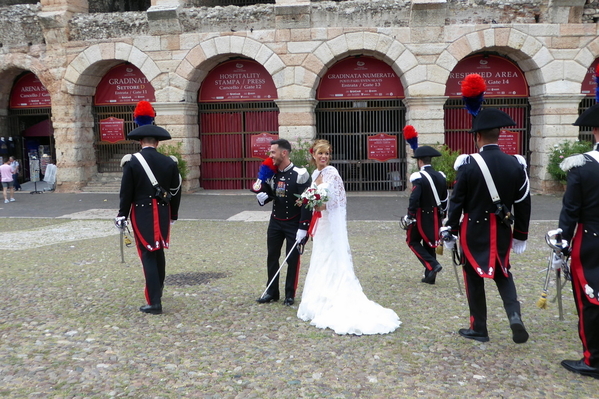
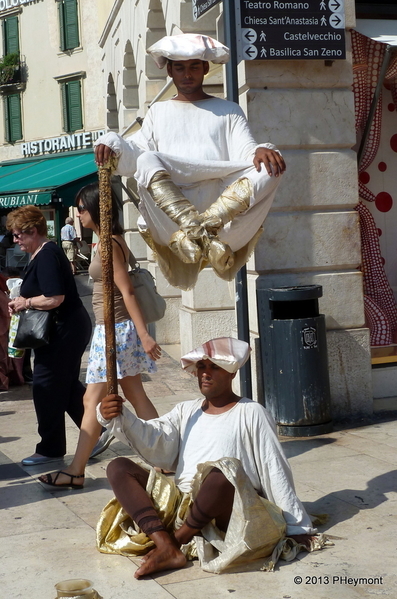 The happenings also include buskers of various sorts, including these 'two gentlemen of Verona' whose act we haven't fully understood yet, although we've seen similar ones elsewhere.
The happenings also include buskers of various sorts, including these 'two gentlemen of Verona' whose act we haven't fully understood yet, although we've seen similar ones elsewhere.
Another feature of the Piazza is a proliferation of booths selling opera programs and souvenirs, and especially cushions to carry into the Arena; productions are long, and while most seats are hard regular seats, a considerable number are the original Roman slabs. Cushions, and ponchos, are de rigeur for the opera!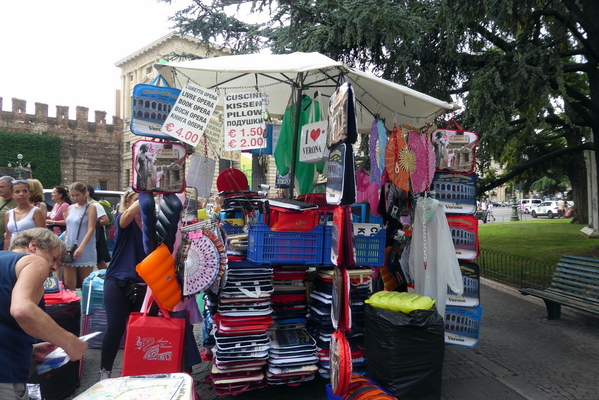
Dinner before the opera makes good business for many of the restaurants along Piazza Bra; with performances not starting until well after late summer sunsets, there's time to eat leisurely.
Along the bottom of the square, the medieval city wall still stands, in part, linked to the Palazzo Barbieri. This is the Portoni del Bra, built in the 15th century, and designed to match the battlements of the nearby Castelvecchio, the city's armed castle, to which it was also attached.
The park in Piazza Bra has two distinguishing features, aside from its pleasant benches and plantings: An equestrian statue of King Victor Emmanuel II and a fountain, called locally the Fountain of the Alps, or Fontana della Alpi. 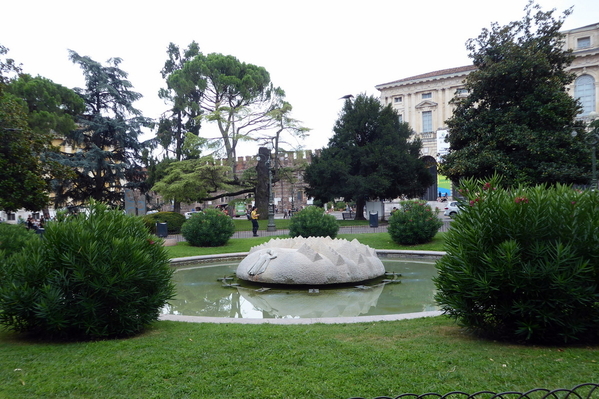
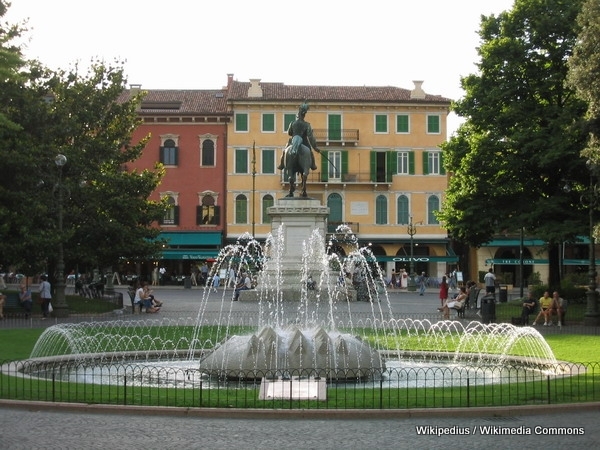
The fountain, with George G recognized as our One-Clue Mystery this week, shows Verona one side and Munich on the other, with the Alps between them. It was presented on the 1975 occasion of their becoming 'twin cities.'
Verona's gift in return was a copy of hometown (fictional) heroine Juliet Capulet, which stands near Munich's Old City Hall, where a tradition has developed that rubbing the statue's right breast brings good luck. The same story applies to the Verona original.
The equestrian statue of Victor Emmanuele at the edge the park honors the king under whose reign Italy was united, and Verona said goodbye to many years of Austrian occupation. It was dedicated five years to the day after his death, and is one of the earliest.

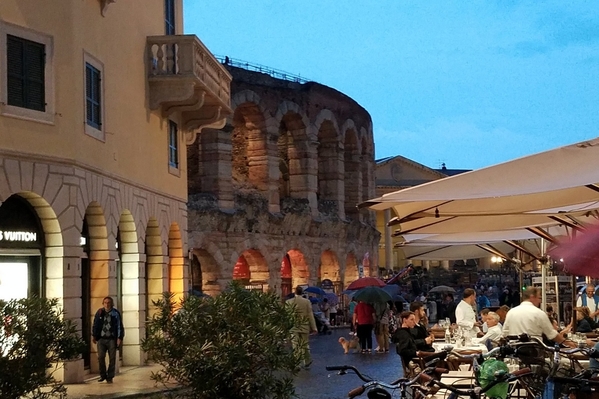
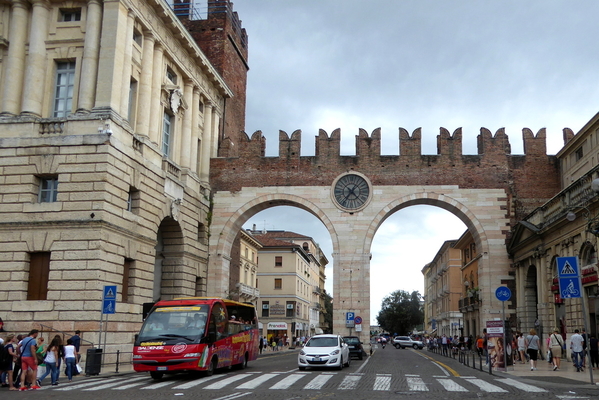
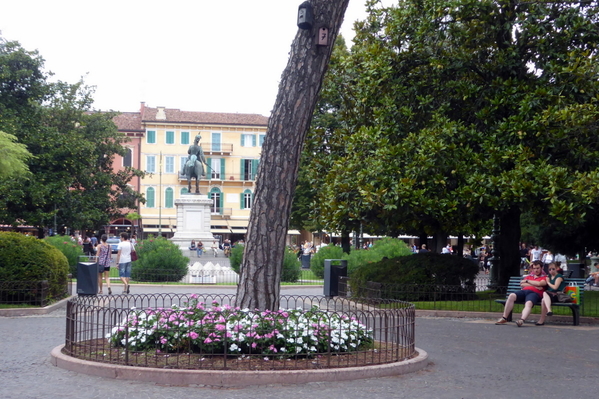
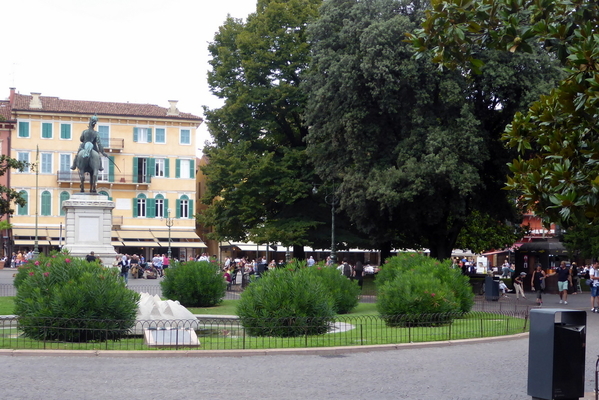

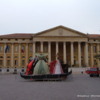



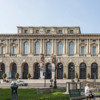










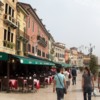
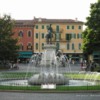
Comments (0)